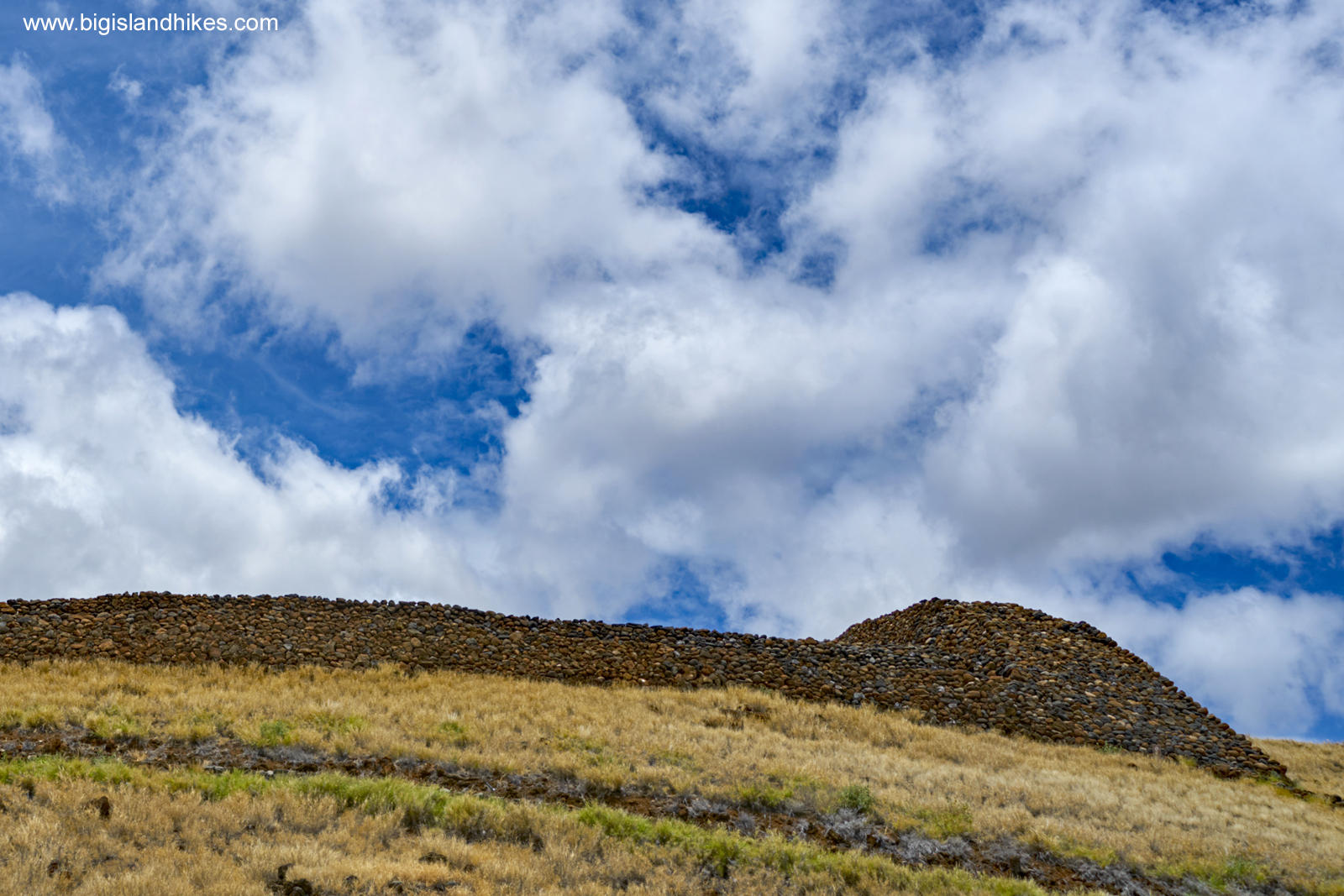Puʻukoholā Heiau
National Historic Site
Round Trip Mileage: 1 Mile
Elevation Gain: negligible
Puʻukoholā Heiau National Historic Site, operated by the National Parks Service, is worth an hour of your time when you’re on the Kohala Coast. It means "Temple on the Hill of the Whale." This massive temple built from 1790-1791 is among the last constructed before western contact and signifies the unification of the Hawaiian islands by Kamehameha I. A Kahuna (high priest) informed Kamehameha that if he built a heiau at Puʻukoholā dedicated to the war god Kūkaʻilimoku, he would not only rule Hawai'i island but all of the Hawaiian islands. According to some oral histories, the red stones were passed by hand over 14 miles from Pololū Valley. It is a good example of the "dry-stack masonry" method of ancient Hawaiian construction, where walls are built without mortar. This well-preserved park has several fascinating ruins including the heiau itself, the walls of an older heiau, and the site of an offshore heiau that hasn’t been seen since the 1950s and is likely buried in silt on the ocean floor. Consider taking a Ranger-led tour for a nominal fee during your visit to learn more about the history of this site.
There is no entry fee to Puʻukoholā Heiau National Historic Site. It is open daily year-round 8:00am to 4:45pm (including all Federal Holidays). The Park entrance gate closes by 4:30pm daily and all vehicles need to be out of the parking lot by 5:00pm. There are restrooms and drinking fountains available.
Trailhead: This historic park is located a mile south of Kawaihae on Hwy 270, near the intersection of Hwy 19.
Gear: Standard hiking gear. Bring plenty of water and sun protection.
Map: View a National Parks Service map of Puʻukoholā Heiau National Historic Site
Hike: This isn't much of a hike, but a walk on paved and gravel trails in a historic park. There are several places of interest inside the Historic Site:
Pelekāne Bay
Puʻukoholā Heiau: This temple was built by Kamehameha in the early 1790s. It was the last major temple built in Hawai'i. Thought to have been built upon another existing heaiu, Puʻukoholā's construction was prophesied to ensure Kamehameha's ability to conquer all of the Hawaiian islands and was dedicated to his family's war god, Kūkā’ilimoku (often abbreviated as Kū). The reddish ‘alā (waterworn river stones) comprising the walls of the templer were passed by hand from nearby Pololū valley. Puʻukoholā was a luakini heiau -- dedicated to human sacrifice. Visitors are not permitted to enter this site.
Mailekini Heaiu: This temple is a bit downhill and to the west from Puʻukoholā Heiau. Meaning "many maile vines," this temple is much older than Puʻukoholā. During the reign of Kamehameha, one of his western advisors named John Young converted this temple into a fort in order to protect the bay.
Pohakū leaning stone at Hale ō KapuniHale ō Kapuni: This ancient temple is completely submerged offshore in Pelekāne Bay. The ancient Hawaiians would place food offerings on Hale ō Kapuni heiau in the bay. The high chief Alapa'ikūpalupalumanō liked to watch the sharks feed on these offerings as he sat upon a pohakū (stone) bench or leaning post. His leaning post can be found just offshore, but the submerged temple has not been seen since the 1950s and is likely covered in silt. Modern shark activity seems to prove the ancient tales concerning this bay.
Pelekāne: These ruins are nearer to the bay and were the royal courtyard of Kamehameha II. He prepared for his role as king of the Hawaiian kingdom after his father died.
John Young Homestead: Located across Hwy. 270 and north from Puʻukoholā, this European-style homestead belonged to John Young. Stranded on Hawai'i after his ship left without him, Young eventually became a trusted advisor to Kamehameha for military and trade strategies. He married Kamehameha's niece and became the Royal Governor of the Big Island in 1802. John Young's granddaughter was Queen Emma, wife of Kamehameha IV. Called 'Olohana ("all hands," after the common maritime expression), John Young is one of two non-Hawaiians to be interred at the Royal Mausoleum in Honolulu.
Puʻukoholā Heiau



